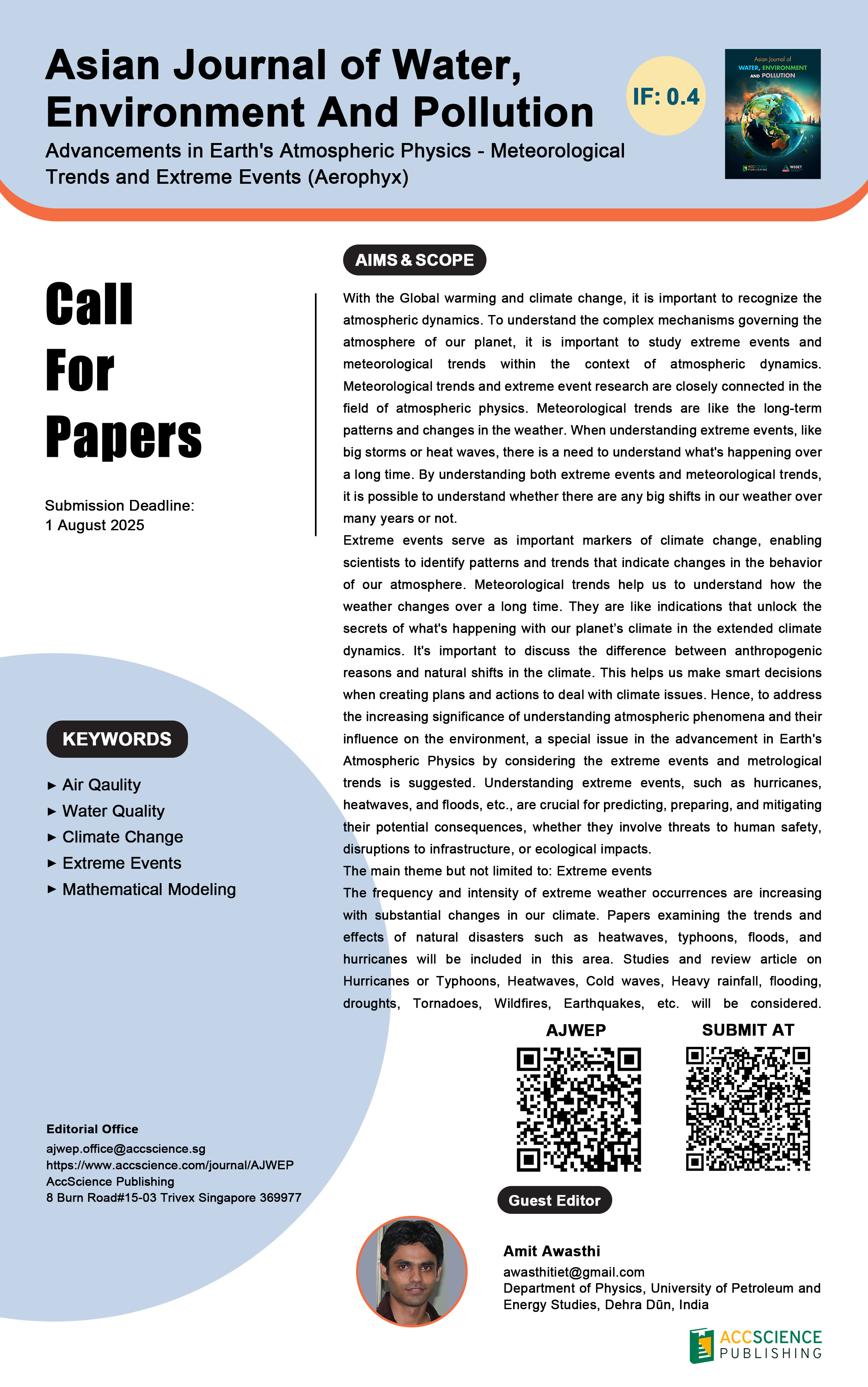
With the Global warming and climate change, it is important to recognize the atmospheric dynamics. To understand the complex mechanisms governing the atmosphere of our planet, it is important to study extreme events and meteorological trends within the context of atmospheric dynamics. Meteorological trends and extreme event research are closely connected in the field of atmospheric physics. Meteorological trends are like the long-term patterns and changes in the weather. When understanding extreme events, like big storms or heat waves, there is a need to understand what's happening over a long time. By understanding both extreme events and meteorological trends, it is possible to understand whether there are any big shifts in our weather over many years or not.
Extreme events serve as important markers of climate change, enabling scientists to identify patterns and trends that indicate changes in the behavior of our atmosphere. Meteorological trends help us to understand how the weather changes over a long time. They are like indications that unlock the secrets of what's happening with our planet’s climate in the extended climate dynamics. It's important to discuss the difference between anthropogenic reasons and natural shifts in the climate. This helps us make smart decisions when creating plans and actions to deal with climate issues. Hence, to address the increasing significance of understanding atmospheric phenomena and their influence on the environment, a special issue in the advancement in Earth's Atmospheric Physics by considering the extreme events and metrological trends is suggested. Understanding extreme events, such as hurricanes, heatwaves, and floods, etc., are crucial for predicting, preparing, and mitigating their potential consequences, whether they involve threats to human safety, disruptions to infrastructure, or ecological impacts.
The main theme but not limited to:
Extreme events
The frequency and intensity of extreme weather occurrences are increasing with substantial changes in our climate. Papers examining the trends and effects of natural disasters such as heatwaves, typhoons, floods, and hurricanes will be included in this area. Studies and review article on Hurricanes or Typhoons, Heatwaves, Cold waves, Heavy rainfall, flooding, droughts, Tornadoes, Wildfires, Earthquakes, etc. will be considered. Through modeling and simulation studies, researchers will explore the dynamics of severe atmospheric occurrences, improving our knowledge of their origins and possible future trends.
- Analysis of extreme weather events such as hurricanes, typhoons, floods, and heatwaves.
- Modeling and simulation studies to understand the dynamics and impacts of extreme atmospheric phenomena.
- Risk assessment of air & water pollution, and extreme events using mathematical, statistical, and computational models
- · Machine learning and artificial intelligence techniques for predicting variations in air & water quality, climate change, and extreme events
Meteorological trends
Understanding climate patterns and forecasting future changes need an understanding of long-term trends in meteorological data. Papers examining temperature, precipitation, wind, and atmospheric pressure trends, etc. will be included in this area. Consequences of these patterns on both regional and global climate will be considered, offering a thorough picture of the changing atmospheric terrain.
- Long-term trends in meteorological parameters, including temperature, precipitation, wind patterns, and atmospheric pressure.
- Implications of these trends on global and regional climate patterns.


